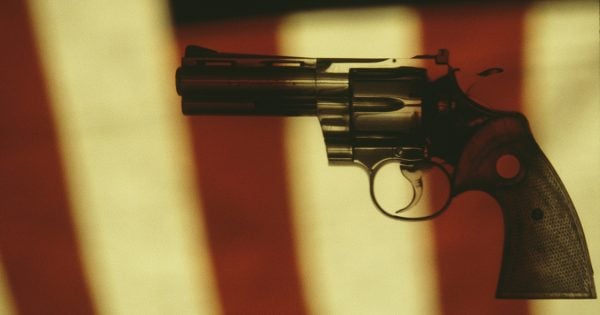Content note: This post concerns suicide and may be triggering to some readers.
We keep reading and reading and reading about the number of people guns are killing in America.
Sunday night’s attack in Las Vegas, in which one man broke two windows 32-floors high and rained bullets upon a crowd of 22,000 using a room full of guns that had been rigged to fire like automatic weapons, ignited the conversation. Again.
Fifty-nine people died – the biggest mass shooting in modern American history – for us to read about the number of people guns are killing in America and what might be done to stop it.
In 2015, that number was 36,252. In 2014, it was 33,594. In 2013, it was 33,636.
What we don’t read about is the number of these deaths that are suicides.
Of the 36,252 people who died by firearms in 2015 in the US, 12,979 of these deaths were homicides, according to the National Center for Injury Prevention and Control. Almost double this number – 22,018 of these deaths – were suicides using a firearm.
In 2014, the number of suicides with a gun was 21,386 compared to 11,008 homicides. In 2013, it was 21,175, compared to 11,208.
The numbers show one clear truth: the majority of gun deaths in America are suicides.
And that’s one more argument – one we rarely ever hear about – for tougher laws around gun control.
First, we’ll look to Australia.
The number of suicides by firearms in Australia declined drastically in the years following the 1996 gun buyback that came after the Port Arthur Massacre.


Top Comments
Gun laws. The Las Vegas shooter broke the laws. Killing a person is against the law tampering with a weapon is against the law. You can make all the laws one wants If there broken how do you punish the person if they commit suicide? Gun laws are necessary they give responsible gun owners protection and guidance
By tightening gun laws you tighten access. All of this guys guns and the accessories to make them virtually full auto were legally purchased. Now, he had plenty of money, so even if they were banned, he likely could have obtained them on the black market. But he might also have come to the attention of authorities while doing so and been imprisoned before he had the chance to slaughter dozens.
Tighter gun laws won't stop all deaths. Probably won't stop most of them. But even if it only prevented 1% by restricting access, wouldn't that be worth it?
They don’t want it. Read any comment thread anywhere that discusses it. A significant number of Americans don’t want gun control. They literally don’t want it. They’re absolutely convinced it won’t do anything.
Correct. Americans would actively resist any attempt to disarm them by any government, including their own.